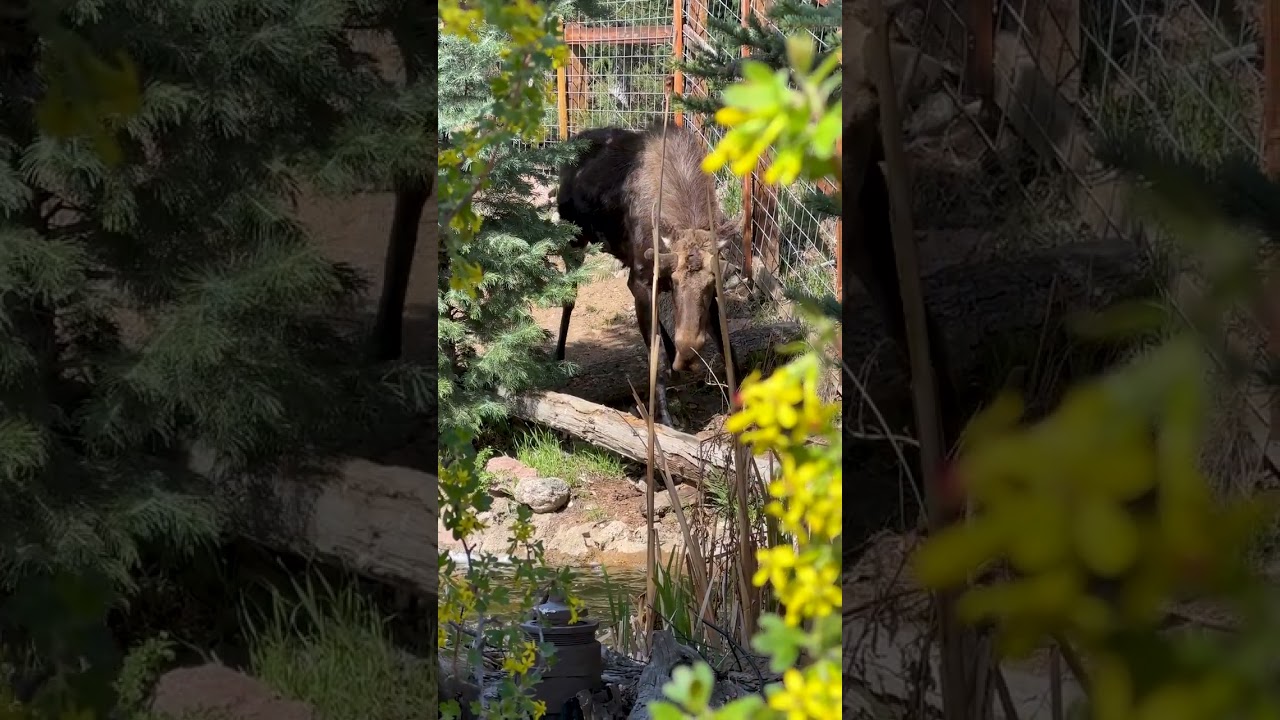– Antler growth in cervids, highlighting Atka the reindeer as a case study.
– The significance of zoos in wildlife conservation and education.
– Zoo management practices that ensure animal welfare and visitor engagement.
Antler growth in cervids is a remarkable biological process that captivates both casual observers and scientific communities. Atka the reindeer is an excellent example. He is currently showcasing the regeneration of his antlers at the Cheyenne Mountain Zoo, where a recent video has given the public a close-up look at this annual cycle. Antlers, composed of bone, are unique to the deer family, and unlike horns, they are shed and regrown each year. Growth is a rapid and energy-intensive process, often resulting in a soft, velvety covering before hardening. This fuzz is a network of blood vessels and nerves that nourish the developing bone.
Several factors influence their size and shape as antlers grow, including genetics, age, nutrition, and overall health. Young individuals like Atka often experience significant changes year over year as they reach maturity. The growth phase is regulated by hormones that respond to shifts in daylight. Reindeer, particularly adapted to harsh climates, use their antlers for varied purposes, including foraging, defense, and sexual display during mating seasons. Atka’s display of new fuzzy antlers is not merely an exhibition of zoological curiosity but also a testament to the animal’s health and well-being under the care of the zoo’s professionals.
Moreover, the Cheyenne Mountain Zoo’s focus goes beyond spectacle. The zoo management and staff ensure that Atka and other animals receive optimal care. Every aspect of habitat design, daily nutrition, and veterinary oversight is strategically planned. The staff also engages in educational outreach, using platforms like social media to share moments of #CMZooZen with Atka to highlight the marvels of wildlife and encourage public interest in conservation.
On a broader scale, zoos serve as reservoirs of biodiversity, participating in various conservation programs. They often collaborate on species survival plans, captive breeding initiatives, and reintroducing endangered species into the wild. Zoos have evolved into modern-day arks, safeguarding genetic diversity and providing refuge for animals like Atka, representing their wild counterparts’ plight in habitat loss and climate change. In Atka’s case, viewers of his antler growth get more than a peek at an intriguing biological process—they receive a silent prompt about the resilience of nature and our responsibility to protect it.
The Cheyenne Mountain Zoo’s integration of visitor engagement and educational content shows a dynamic approach to zoo management. With exhibits and showcases as informative as they are captivating, the zoo team is determined to provide an immersive experience. By balancing the needs of wildlife preservation and public enjoyment, they create moments like those shared with Atka, which form a bridge between humans and animals, fostering a deeper understanding and appreciation for the natural world.
This approach to zoo management aligns closely with the objectives of global wildlife conservation efforts. It underscores the critical role of well-managed zoological parks in the broader tapestry of strategies to protect ecosystems and species. The commitment to animal welfare and conservation education creates a strong foundation for conservation efforts extending beyond the confines of the enclosure.
In an era where wildlife faces numerous threats, zoos like the Cheyenne Mountain Zoo, with their resident reindeer Atka, are pivotal in nurturing an informed and concerned public. Through active management and captivating outreach, these institutions stand at the forefront of a movement striving to ensure the survival and well-being of the world’s most extraordinary creatures. Their pivotal role in conservation and commitment to providing outstanding care for animals like Atka reaffirms the essential nature of their work in the interconnected web of life on Earth.
*****
Source Description
Take 20 seconds for some #CMZooZen and check out Atka’s new fuzzy antlers growing in!
Atka shed his antlers on Feb. 24 and 25 and is now growing a brand new pair over the next few months. Antlers, covered in soft velvet containing blood vessels, continue to grow until late summer or fall, when rutting begins. As rutting season starts, the velvet sheds, revealing bony antlers beneath. Each winter or spring, moose antlers fall off and a new set starts to grow, then the process starts all over again.


